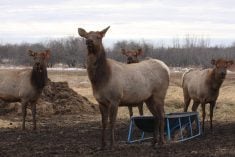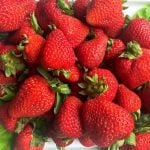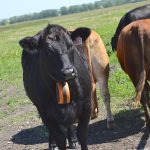With more cattle living on prairie farms this summer, many producers will be looking at annuals to increase their potential feed supply.
However, they should ask themselves a number of questions before making any choices, says Trevor Lennox, a rangeland and forage agrologist with Saskatchewan Agriculture in Swift Current.
“For example, producers should think about which crops will grow in their region and also what these crops will cost to produce,” he said.
“They should also remember that high-priced seed carries an additional cost: a greater financial risk if the crop does not perform.”
Read Also

Why feds imposed EV tariffs
Moe and Kinew have a fight on their hands when it comes to eliminating the EV tariff. Canada has to worry about pissing off the U.S. and Mexico and hundreds of thousands of auto workers.
He said producers who select an annual cereal for forage should remember that grain yields generally equate well to forage yields, which means they should choose the highest grain-yielding varieties for their area.
“It’s important that they not get overly hung up on selecting the highest yielding variety, however, as moisture and soil fertility have a greater effect on yield potential than variety selection does.”
Lennox said there are many annual options. For example, producers can select from spring cereals, most commonly oats, barley and triticale. They may select from winter cereals, with fall rye and winter triticale being the most popular. A 50-50 mixture of spring and winter cereals can extend the grazing season, while pulse crops such as peas may be seeded with a spring cereal for swath grazing or greenfeed purposes. Warm-season crops such as millet may be used for swath grazing, while corn may be used for winter grazing or for silage.
“When selecting the type of crop, it is also important to assess when you need the forage – spring, summer or fall – as each crop has a different growth strategy,” he said.
“Spring cereals such as oats or barley, for example, will provide earlier forage than a winter cereal such as fall rye, which will provide better forage quality later in the grazing season. It is also important to differentiate whether you intend to graze or swath the crop, as winter cereals are better suited to grazing than many spring cereals.”
Lennox said crops such as oats and triticale are more prone to nitrate accumulations when stressed by drought or frost. As well, a forage stand that is heavily fertilized with nitrogen is more prone to nitrate accumulation than a more moderately fertilized stand. A balanced fertility approach, in which an application of phosphorus accompanies the nitrogen, can help reduce a potential nitrate problem.
He also said harvesting methods affect costs, so producers should start planning ahead.
“The harvest efficiency improves as you move from grazing to swath grazing to swathing and baling, but the production costs increase as well,” he said.
“Swathing and baling, for instance, recovers almost all the material, while grazing and swath grazing involves the loss of some materials by trampling and defecating by the herd. But even this wastage can be controlled with more intensive management, such as fencing small areas and forcing the animals to clean up the field.”
In dry areas such as the Prairies, a spring cereal that is grazed will never yield the same amount of total forage as one that is swathed in the mid-dough stage.
“So, if producers want to maximize their productivity potential, allowing a crop to go to the mid-dough stage will yield more forage than trying to rotationally graze an annual crop,” he said.
“At the same time, however, producers must remember that the use of any mechanical equipment, as with swathing, adds cost to the forage crop.”














